Camouflage shorts and shirt in contrasting pattern. Ankle-high socks with leather sandals. Graying hair in a pompadour. Man-purse. Shopping for tractor parts in the flea market.
Welcome to Central Europe.
Camouflage shorts and shirt in contrasting pattern. Ankle-high socks with leather sandals. Graying hair in a pompadour. Man-purse. Shopping for tractor parts in the flea market.
Welcome to Central Europe.
L recently bought an activity book called “Fabulous Me!” at the school book fair. I can’t deny my decided lack of enthusiasm at the decided lack of humility in the title, but this is the twenty-first century: “I” must stand at the center of everything, and it’s pretty inescapable.
One portion is entitled “Fabulous Fashion,” and it includes a checklist of patterns for material with boxes marked “fab” and “drab” for little fashionistas to mark their opinion of each.
“Daddy, can you help me with this?” she asked just before bed the other night. “I don’t know what these patterns are.”
I promised to sit with her at the computer and help her look them up. “Now, Daddy?” became a mantra in the house. Tonight after dinner, we finally took the time to explore patterns.
Tartan was the first. I was curious what she would think — after all, her last name does has a distinctly Scottish feel to it.

Her reaction was instant and unqualified: “Preeetty!”
“Floral print” was sure to be a hit. After all, she is always interested in flowers. She wants to pick them, to grow them, to draw them.
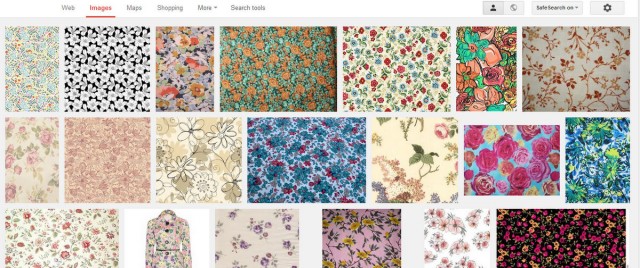
And based on her reaction — “Wow!” — probably to wear them now.
When we came to “check pattern,” I thought she’d turn up her nose. Compared to a floral pattern, it’s awfully rigid; compared to a tartan, it’s virtually monochromatic. (Well, I guess most check patterns are in fact monochromatic.)

The reaction was a half-hearted, “It’s nice.” She checked off “fab,” but not with much enthusiasm.
When she read the next pattern, “heart print,” she was excited before I even began typing it into the search bar. She knew — just knew — it would be something special.
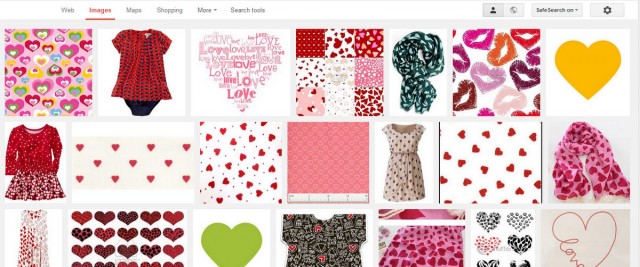
“Yes!” she shouted, checking off “fab” and adding another “Yes!” for good measure.
I thought “stripes” would get a pass. Not that she wouldn’t like them — she did, so-so. I just thought she wouldn’t care so much what Google dished up. Turned out, that’s exactly what she was curious about.
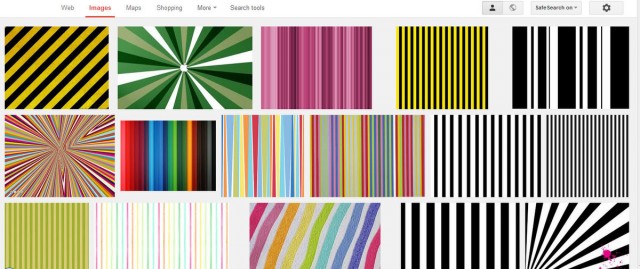
“I just want to see. You know, I want to see what they show for ‘stripes.'”
Zig zag print

“Gingham,” I thought, being essentially a check pattern, would elicit the same response. Wrong.
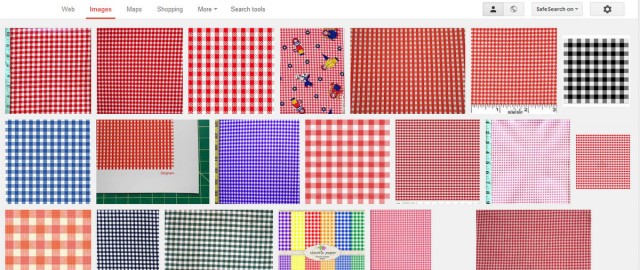
“No!” she said emphatically, checking off “drab” with decided purposefulness.
Finally, we reached “animal print.” The best reaction of all.
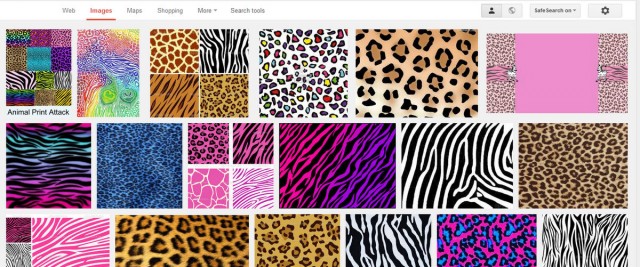
“Goooorgeous!”
Indeed.
I’ve never been much of a non-winter hat person. It’s not that I worry about hat head: I have no hair (or short hair at best). I only use hats to keep my head warm, and in the summer, the additional layer only makes me slightly miserable.
At the beach recently, though, I bought a sun hat with which I’m reasonably pleased.
It also works well as a hat rack itself.
Our school has a dress code that in effect creates a school uniform. It is, in short, relatively strict. Regarding shirts, it reads, in part:
The county dress code is somewhat more lenient, and on occasion, students are able to come dressed in the less restrictive, county dress code.
For all involved, it usually turns into more of a nightmare. Such esoteric concerns as “Should this shirt be tucked in?” and “Is this accessory permissible?” take up much of the first minutes of the day.
A few weeks ago, we had such a “county dress code day” and there was much emotion and worry about whether the fashionable, down-to-the-bottom-of-the-crotch tee-shirts had to be tucked in or not. County dress code states that shirts that are designed to be tucked in should be tucked in, so it was a reasonable assumption that this particular style shirt didn’t have to be tucked in. Other styles caused problems, and a general rule was implemented just before first period: if it’s a rounded seem, tuck it in.
It occurred to me that a clothing designer could create a dress shirt (i.e., with the rounded shirt tail) with the intention of it not being tucked in. And walking back to the classroom, I shook my head and laughed aloud at the amount of energy we expend on such trivial things as whether or not to tuck in a shirt.
And the experience made me quite thankful for our strict dress code. The kids complain about it and about my enforcement, but I can simply respond, “The dress code is out of my control, and I will get reprimanded if I don’t enforce it. So if you have a problem with it, you should talk to the principal.” In short, it allows me to pass the buck.
Growing up in a conservative church, I wore a tie every single weekend. (Every Saturday, in fact, not Sunday, but that’s an entirely different story.) And in my teens, in the late 80’s, it was critical that they not be just any ties. They had to be fashionable, which means today, they’re dated.
When we moved to Asheville years ago, I found all my ties among the clothes I’d packed away ages before. What a flood of memories those silly ties brought back.
They were narrow, that was the most important thing. I would look through Dad’s ties, admitting that some of them had appealing designs, but they were wide enough to rival aircraft carriers.
While they had to be narrow, though, the pattern had to be fresh.
And “fresh” is almost never “timeless.”
My pièce de résistance, though, was my white leather tie. Probably not even two fingers wide, it was a classy statement all in itself.
After we found them and I took some pictures, we dumped them off at Goodwill. If there’s any justice in the fashion world (and there isn’t — only trends), they’re still sitting there.